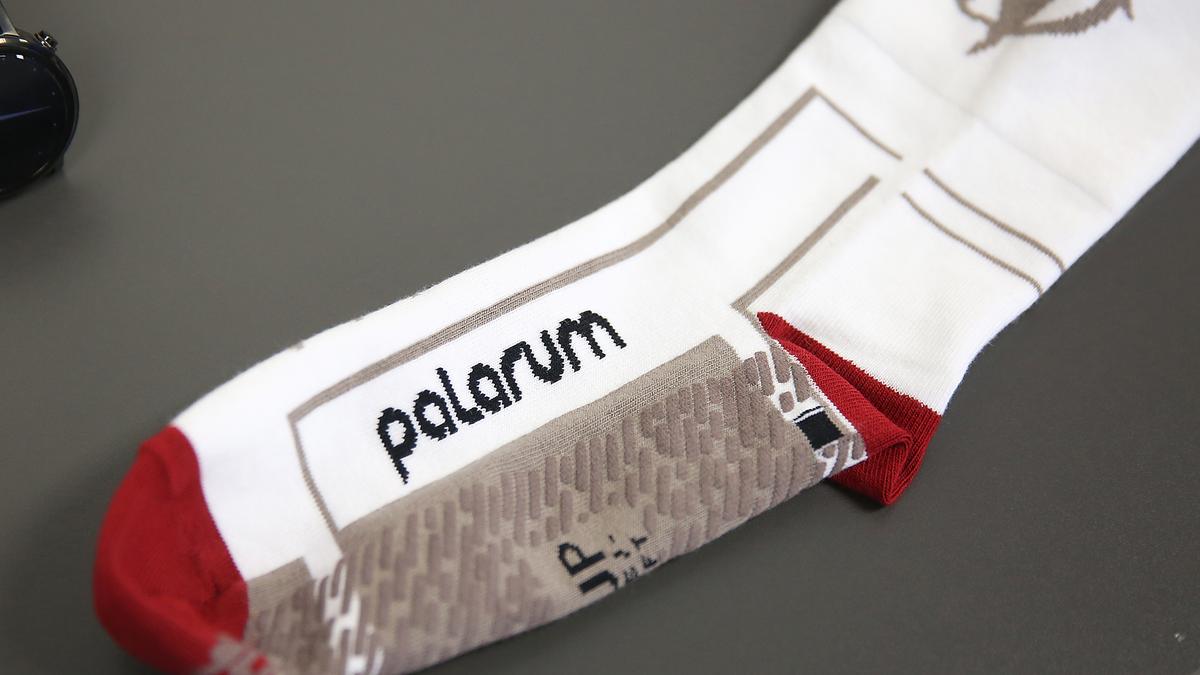

Research led by nurses at The Ohio State University Wexner Medical Center found that a new wireless sock monitoring system reduced fall rates among “fall-risk” patients hospitalized at Ohio State’s Brain and Spine Hospital. In fact, none of the patients who were on a fall-risk protocol fell while wearing the socks over 2,211.6 patient-days during the study.
The study evaluated the effectiveness of Palarum’s PUP (Patient is Up) Smart Socks and findings are published online in the Journal of Nursing Care Quality.
Data was collected on 569 patients who were hospitalized in the major academic medical center’s neurological and neurosurgical units during 13 months of the study period. These units specialize in stroke, orthopedics, neurosurgery, general neurology and epilepsy. Originally planned to enroll 2,500 patients, the study ended early because of the COVID-19 pandemic.
“Patients can fall while they are hospitalized, and this can sometimes lead to injury or death. We know that existing fall prevention measures do not work consistently,” said senior investigator Tammy Moore, Associate Chief Nurse of Ohio State’s Neurological Institute and Medical Surgical. “During our study, we observed zero falls, which was a lower fall rate among the patients wearing these socks than the historical fall rate of 4 falls per 1,000 patient-days.”
During the study period, 5,010 safety events (alarms) were associated with the system. Eleven were reported to be false alarms, indicating 4,999 of the safety events (or 99.8%) were true patient stands, Moore said.
At admission to the hospital, patients’ fall risk scores were assessed by nurses based on the hospital’s assessment tool. All patients enrolled in the study were provided with the socks until discharge or removal from the fall risk protocol, and no other fall prevention system, such as chair or bed alarms or TeleSitter was used for these patients.
The safety system consists of the socks with built-in pressure sensors that detect when a patient is trying to stand up in combination with interrelated devices with sensors that exchange data over a wireless network. The system also includes an in-room tablet for each patient room, a local server, a monitoring device at the nurses’ station and “Smart Badge” notification devices worn by the nurses, said Chris Baker, co-founder and vice-president for business development at Palarum.
When the socks detect an attempt to stand up, the system alerts the three nurses it finds closest to the alarming room through their badges. When a nurse with a badge then enters the patient’s room, the alert is automatically deactivated. If none of those nurses enter the room within the first 60 seconds, the alarm escalates to the next three closest. If no one responds within 90 seconds, the system proceeds to an “all call” to all Smart Badges logged into the alarming unit, Baker said.
“Due to the rapidly aging population, the number of patients at higher risk of falling in hospitals is expected to increase substantially. About 30% of in-hospital falls are thought to be preventable, so it’s imperative to determine better ways to keep our patients safe from falling while hospitalized,” said study co-author Tina Bodine, a nurse navigator at Ohio State’s Neurological Institute.
Fall prevention measures usually focus on patient education, increasing nurse awareness, or preventive measures such as installing bed and chair pressure sensors. In hospitals, bed and chair pressure sensors are very common because most falls occur when patients try to get out of bed to attempt to use the toilet. Despite their widespread use, other studies have shown that bed and chair pressure sensors do not prevent falls in hospitals.
“A major problem with bed and chair pressure sensors is that the high numbers of false alarms may cause ‘alarm fatigue’ that can contribute to delayed response,” Bodine said. “With this system, no falls were detected, and only 0.2% of the alarms were false alarms. We also analyzed nurse response times that ranged from 1 second to nearly 10 minutes and found that the median nurse response time was 24 seconds.”
Nurse response times to bed and chair pressure sensors have not been published, and researchers did not have historical response times for participating units.
“However, our staff believed that response times were improved compared with the use of bed and chair alarms, among others, because alarm notifications included room numbers, targeted the 3 closest clinical staff members, and notified nurses directly instead of indirectly through a nurse station,” Moore said.

